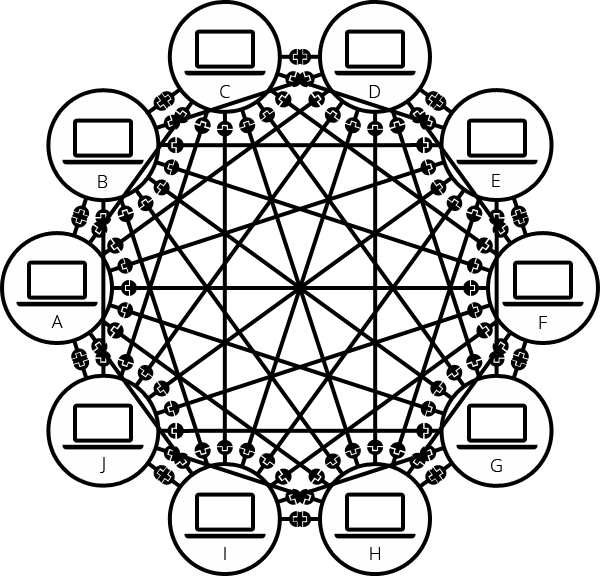- Published on
How Does the Internet Work
- Authors
- Name
- Full Stack Engineer
- @fse_pro

The internet is a vast and complex network that connects computers and enables the exchange of information globally. As an experienced programmer, it's crucial to have a deep understanding of how the internet works and the underlying protocols that facilitate its functionality. In this technical guide, we will explore the inner workings of the internet, explain key concepts using TypeScript code samples, and provide clear explanations.
How Does the Internet Work?
Understanding IP Addresses
At the core of the internet are IP addresses, which uniquely identify devices connected to a network. An IP address is a numerical label assigned to each device, allowing for accurate data transmission. In the realm of programming, IP addresses are frequently encountered when working with networking libraries and protocols.
IP addresses come in two primary formats: IPv4 and IPv6. IPv4 addresses consist of four sets of numbers separated by periods (e.g., 192.168.0.1), while IPv6 addresses are more advanced and contain eight sets of alphanumeric characters (e.g., 2001:0db8:85a3:0000:0000:8a2e:0370:7334).
// TypeScript code sample to represent an IP address
const ipAddress: string = '192.168.0.1'
The Role of DNS
The Domain Name System (DNS) plays a vital role in simplifying our internet experience. While IP addresses are necessary for device communication, remembering numeric addresses for each website is impractical. DNS solves this problem by associating domain names (e.g., www.example.com) with their corresponding IP addresses.
As experienced programmers, we frequently interact with DNS when building applications that resolve domain names or perform DNS lookups. Networking libraries often provide functions or classes to programmatically work with DNS.
Data Packets and Routing
Data transmitted over the internet is divided into small units called data packets. Each packet contains both the transmitted data and control information, including source and destination IP addresses. Understanding data packets is crucial for developing efficient and reliable networked applications.
When a device sends a packet, it traverses various network routers to reach its destination. Routers are responsible for directing packets along the most efficient paths based on the destination IP address. As programmers, we encounter routing concepts when optimizing network traffic or implementing load balancing algorithms.
Protocols and the World Wide Web
The World Wide Web (WWW) is a collection of interconnected websites accessible through the internet. It relies on various protocols to function effectively. As experienced programmers, we are familiar with HTTP, the Hypertext Transfer Protocol, which governs communication between web browsers and servers.
HTTP follows a request-response model, where a client (e.g., a web browser) sends an HTTP request to a server, and the server responds with an HTTP response, typically containing the requested web page's data. When building web applications or interacting with web APIs, we often work with HTTP libraries or frameworks to handle these communication protocols.
Securing Internet Communications
In today's digital landscape, securing internet communications is of utmost importance. As experienced programmers, we understand protocols like SSL (Secure Sockets Layer) and its successor TLS (Transport Layer Security). These protocols encrypt data transmitted between web browsers and servers, ensuring confidentiality and integrity.
HTTPS, the secure version of HTTP, is widely adopted by websites handling sensitive information. As programmers, we must know how to configure SSL/TLS certificates and work with secure communication protocols when building web applications or APIs.
Conclusion
To delve deeper into this topic, here are some top resources worth exploring:
- TCP/IP Illustrated, Volume 1: The Protocols: W. Richard Stevens' book provides an in-depth explanation of the TCP/IP protocol suite, which forms the backbone of the internet.
- DNS and BIND: Cricket Liu's comprehensive guide covers DNS from basic concepts to advanced techniques.
- HTTP: The Definitive Guide: David Gourley and Brian Totty's book offers a thorough understanding of HTTP and its underlying concepts.
- SSL and TLS: Designing and Building Secure Systems: Eric Rescorla's book delves into SSL/TLS protocols, covering design principles, implementation details, and best practices.
- Cloudflare Blog: Cloudflare's blog provides insightful articles on internet infrastructure, security, and performance optimization.
Now that you have a solid foundation, continue exploring and pushing the boundaries of what you can achieve in the fascinating world of the internet!